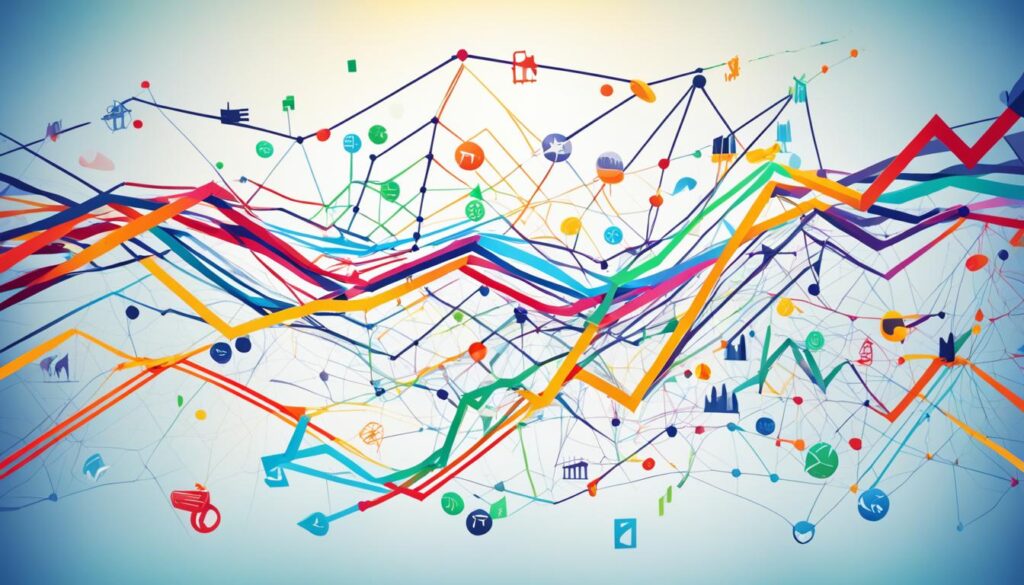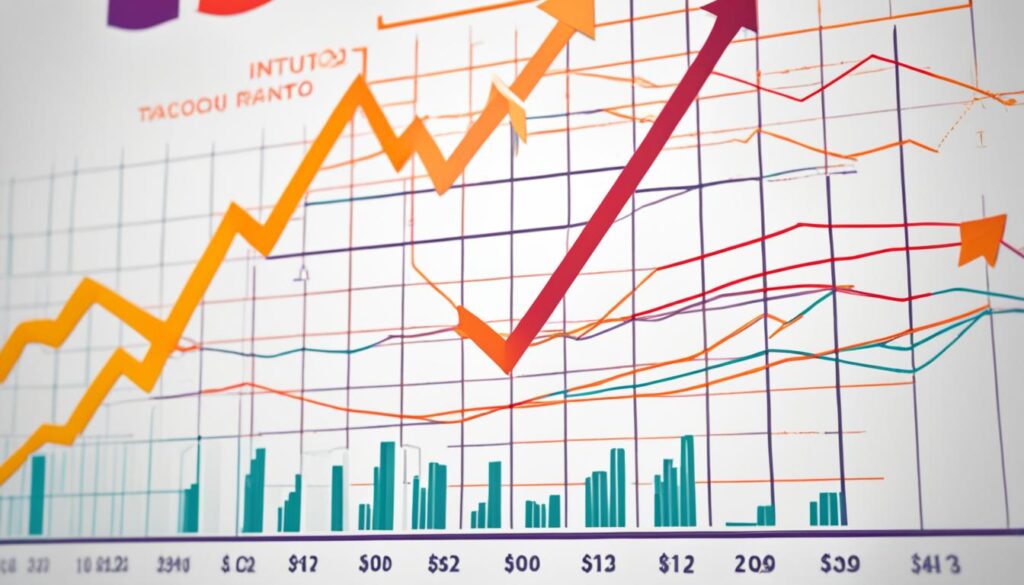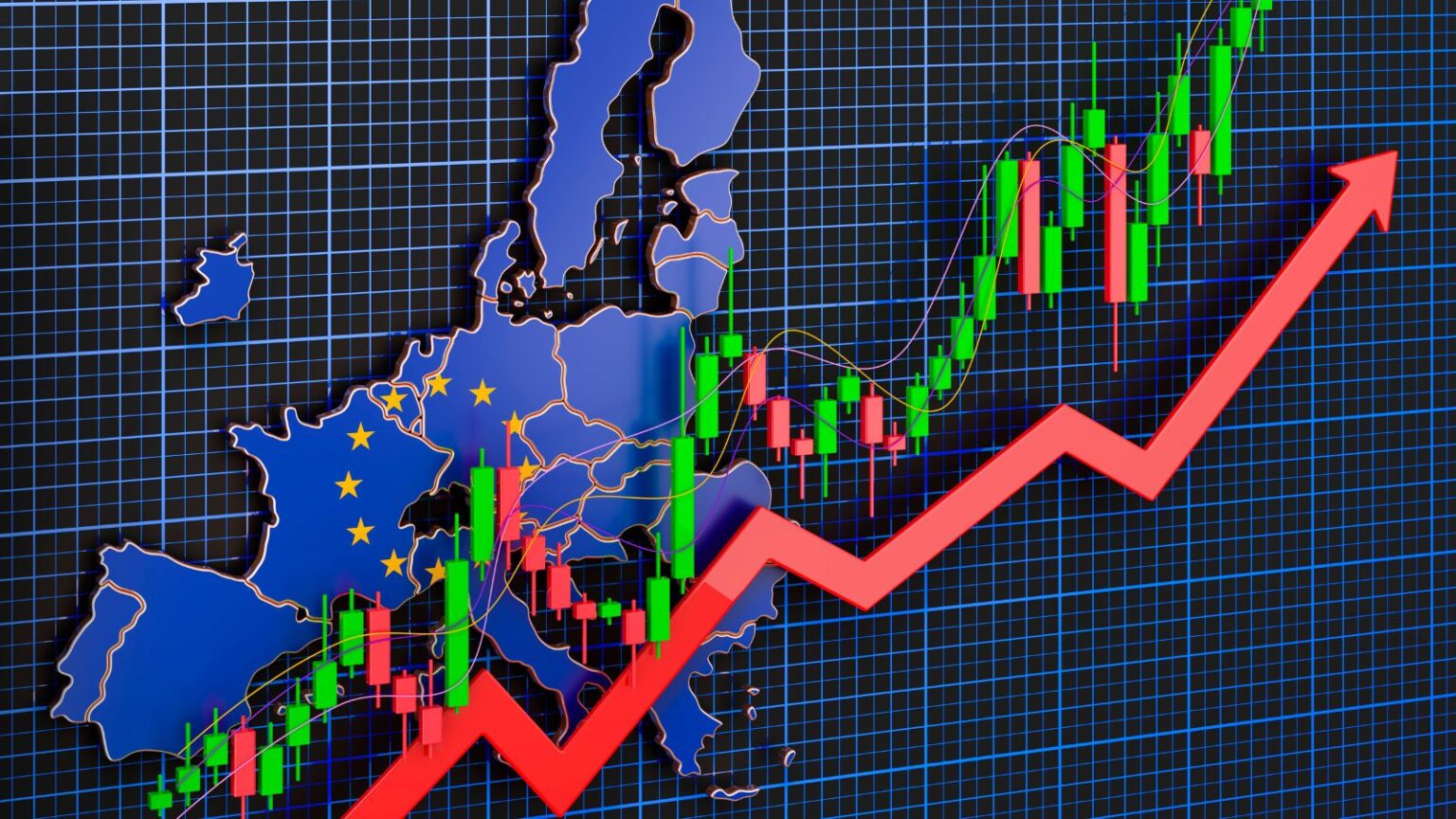Economic indicators are like guideposts for investors, showing the economy’s health. They include things like GDP growth, inflation, and unemployment rates. Investors and policymakers alike use these to understand the economy and predict what may come in the market.
Knowing what these indicators mean is key for smart investing. For instance, GDP growth shows if the economy is getting bigger or smaller. Inflation points to rising prices. These factors help investors decide what moves to make.
Other indicators include how much consumers and businesses are spending. This tells us about the economy’s activity and future outlook. Stock market numbers show how companies are doing. Housing market figures shed light on the state of real estate and what consumers feel.
Observing these indicators closely can give investors important clues. They can better understand the economy’s health and what’s likely to happen in the market. This helps them make better choices when investing their money.
Key Takeaways:
- Economic indicators give investors insight into the economy’s conditions.
- GDP growth, inflation, unemployment rates, and more provide crucial information on the economy.
- They help assess the economy’s health and forecast market trends.
- Watching these indicators closely can lead to more informed investment decisions.
- Knowing what these indicators mean is vital to investing successfully.
Understanding Economic Indicators
Economic indicators are key to showing how the economy is doing. They help investors and policymakers figure out where to put their money. This includes the Federal Reserve, which makes big decisions affecting the economy.
These indicators might seem boring at first. But, they tell us a lot about the economy. For example, they look at prices we pay and reports like the Beige Book. All this info helps us see how things are really going.
The CPI looks at how prices of things we buy are changing. It tells us if things are getting more expensive. This is good to know for anyone who invests their money.
The Beige Book shares stories about the economy from different parts of the US. It talks about how different jobs and places are doing. This helps investors decide where to put their money.
Economic indicators are great because they look at the whole country. They break down the info by job type and area. This helps people who invest really understand what’s going on.
Also, these indicators paint a big picture of the economy. They tell us about things like how much the economy is growing or if prices are going up. Investors can use this to see the big economic trends.
It’s vital for investors to know about these economic signs. By keeping an eye on these important numbers, they are ready to act. This helps them make smart choices with their money based on the latest info.
In the end, these economic signs are crucial for making sense of the economy. From signs of prices going up to the Beige Book reports, they are really helpful. They guide investors on where to put their money. With this info, investors can make choices that fit with the current economic situation.
Using Economic Indicators in Decision Making
Economic indicators are key for making smart investment choices. But, they work best when used together and in context. This way, you get a full view of what they mean.
Take employment data for example. It includes nonfarm payrolls and the unemployment rate. These numbers show how healthy the job market is. If you watch them, you can see if more or fewer people are getting jobs. This helps predict how different parts of the economy might do.
Looking at how much people are spending, through retail sales, is also important. It gives us clues about what’s really going on with consumer spending. By comparing this with how much people earn, you can see if there might be changes in spending habits.
Then, there are figures for factory orders and shipments. These tell us about business investments and the need for goods. Checking these numbers helps investors understand what the companies are up to. It shows us if businesses are confident about the future and willing to spend.
It’s always important to look at the bigger picture, the whole supply chain. This includes everything from raw materials to the finished products. By doing this, investors can make sure they’re understanding all the hints the economy is giving.
Here’s how it works in a real-life scenario:
For instance, if job numbers drop and unemployment goes up, people might start spending less. This could warn investors to maybe pull out of retail stocks. Instead, they might put their money into areas that don’t rely so much on shoppers.
By using many economic indicators together, investors can be better prepared. They can see the big trends and decide how to best place their investments.
Incorporating Economic Indicators into Investment Strategies
Economic indicators are like signposts for smart investing. By paying attention to these signs, investors can craft solid investment strategies.
Looking at these indicators helps spot both chances and dangers. You can tell which sectors are doing well or might soon face troubles. This way, you can pick those that look promising.
Timing is also important. By paying attention to indicators that come out regularly, you can plan ahead. This lets you make moves at just the right time. Such a strategy can help make your investments more profitable.
Overall, mixing economic indicators into your investment plan makes you a smarter investor. It helps you keep up with the economy’s changes and manage risks well. This can lead to a stronger investment portfolio overall.
| Economic Indicator | Description | Relevance |
|---|---|---|
| Employment Data | Includes nonfarm payrolls and the unemployment rate, providing insights into the labor market. | Assesses labor market health and potential impact on consumer spending. |
| Retail Sales | Measures the total receipts of retail stores and provides insight into consumer spending. | Validates trends indicated by retail sales figures and analyzes consumer behavior. |
| Factory Orders | Tracks the total dollar value of new orders for durable and non-durable goods in the manufacturing sector. | Indicates trends in business investment and manufacturing activity. |
| Supply Chain | Examines the flow of goods and services from raw materials to finished products, providing insights into the overall economy. | Validates trends before acting on the results of any single indicator release. |

Personalizing Your Research
People have different ways of using economic indicators depending on their goals. Some like to stick with indicators they know well. They use this knowledge to make smart moves in the market. For instance, an expert in the housing market watches housing data closely. They then make decisions based on what they see.
Others take a broader view, learning about many different economic indicators. They know these indicators work together to show the big economic picture. With this approach, investors can spot opportunities in various sectors. They spread their investments to reduce risks.
No matter the approach, looking at macroeconomic forecasts is key. These forecasts give insights into the economy’s health and future. Staying on top of these helps investors sync their strategies with the economy’s expected path. This way, they can make choices that are more likely to succeed.
“Successful investing is about understanding the nuances of economic indicators and aligning them with your investment strategy.” – John Smith, Chief Investment Officer at ABC Capital Management
Examples of Personalized Research
Let’s look at two types of investors to see how personalizing research matters:
| Investor A | Investor B |
|---|---|
| Specializes in technology stocks | Adopts a diversified investment approach |
| Analyzes technology-specific indicators (e.g., semiconductor sales, internet usage growth) | Considers a wide range of indicators (e.g., GDP, unemployment rate, consumer spending) |
| Focuses on earnings reports and product launches within the technology sector | Looks for correlations between different indicators to identify investment opportunities across sectors |
By focusing on what they know best, Investors A and B can make smarter choices. Understanding how different indicators work together, alongside the big economic picture, lets them find investments that match their goals. This approach helps them make the most of their expertise and strategy.
The Importance of Inflation Indicators
Inflation indicators are key for people who invest in things like bonds. They help us watch how prices change. This is important because it affects how much money we make from our investments.
Two main inflation indicators are:
The Producer Price Index (PPI) and Consumer Price Index (CPI) are big deal for investors. The PPI shows how much prices change for goods when they leave the factory. The CPI tells us about the prices regular people pay for things. It affects how much stuff they can buy.

Money supply and the Employment Cost Index (ECI) are also important indicators. Money supply tells us how much money is around and how fast it’s growing. This can push up prices. The ECI looks at how much it costs to employ people. It shows if companies might start paying more, which affects the job market.
Looking at these indicators helps investors get ready for changes in prices. For instance, if prices are going to go up, it might be smart to invest in things like commodities or stocks that do well when prices rise.
Using these indicators in investing can give investors better knowledge about the economy. But it’s key to look at them along with other factors. This is how we build a solid plan for investing.
Economic Output and Stock Market Performance
Gross domestic product (GDP) is a key measure of economic health. It shows the total value of goods and services a country produces. Investors watch GDP closely. They use its growth rate to understand how well the economy is doing. This helps them make smart choices with their money.
Other than GDP, there are many more indicators of economic health. For example, there’s the Beige Book and the Purchasing Managers’ Index (PMI). There’s also the labor report and the current account balance. All of these, together with GDP, paint a full picture of the economy. They show how it might affect the stock market.
Looking at capital goods shipments can tell us how much businesses are investing. Retail sales show if people are spending money. This can change how well the economy is growing. The current account balance tells us about a country’s trade. This, in turn, can sway how people feel about the market.
The Beige Book offers stories about the economy from different areas. It’s made by talking to local businesses. This gives a less number-focused view of the economy. The PMI shows how active manufacturing is. It predicts the economy’s future. The labor report talks about jobs and wages. It hints at how much people will spend.
Investors use these and other indicators to guide their investment choices. Knowing how the economy is doing is key. It helps them figure out if the stock market will go up or down. Then, they can plan their moves wisely.
Timely Indicators and Market Impact
Some economic indicators give us data that can quickly affect the markets. One key indicator is the Institute for Supply Management’s PMI report. It’s out on the first business day each month. This update looks at the past month, giving insight into how various economic parts are doing.
New orders, production, employment, supplier deliveries, and inventories are what this report talks about. This info helps investors see what might happen next in the economy. That way, they can make smarter investment choices.
The Institute for Supply Management’s PMI report helps us see a bigger picture of the economy. It tells us about trends before they fully happen. This can be a game-changer for investors in fast-moving markets.
For investors, knowing about reports like the PMI is key. It allows them to quickly adjust when the market changes. By spotting trends early, investors can make moves that are just right for the current market.
Sector-Specific PMI Data Example
Let’s see what PMI data can tell us about different sectors:
| Sector | PMI Reading | Market Impact |
|---|---|---|
| Manufacturing | 52.3 | When the manufacturing PMI is over 50, it shows growth. This often boosts stock prices in the sector. |
| Services | 48.7 | A services PMI under 50 means the sector is shrinking. It might hurt service companies’ stock prices. |
| Construction | 55.6 | A high PMI in construction can give a confidence boost in the housing market. |
Looking at PMIs by sector helps investors see what’s strong and what’s not. This knowledge guides smarter investment choices, focusing on areas that are doing well.
By understanding and using reports like the PMI, investors can keep up with the economy’s changes. This knowledge boosts their chances of doing well in a complex financial world.
Conclusion
Economic indicators help investors see how well the economy is doing. This lets them make smart investment choices. They keep a close eye on things like the growth of GDP, inflation, and the job market. Also, things like how much people are spending and investing are big clues. Knowing about the stock market and housing market is key too.
It’s really important to get what these economic indicators mean. They show what the economy is like now and might do in the future. If investors understand these signs, they can feel more sure about their money moves. They can use this knowledge to make wise investment decisions.
These tools let investors get a good handle on the economy and what might lie ahead. Economic indicators help them see when they should adjust their investments. With a clear understanding and good analysis, they can steer their way to success. They can make choices that are right for their financial future.
FAQ
What are economic indicators?
Economic indicators give us hints about an economy’s health and performance. These include GDP growth, inflation, and unemployment rates. They also cover things like interest rates, consumer spending, and stock market highs and lows.
Why are economic indicators important for investors?
They let investors see how the economy is doing. This knowledge helps them make smart choices about where to put their money. By keeping an eye on these indicators, investors can predict market changes.
How can economic indicators be used in investment decision-making?
To make investment choices, investors look at many economic signs. For instance, job market health can be seen in employment numbers. Sales numbers hint at what consumers are doing. By looking at these and more, investors can choose wisely.
Do different investors have different approaches to using economic indicators?
Different investors do have their own strategies. Some might deeply study specific indicators to make decisions. Others prefer knowing a bit about many indicators, not relying too much on just one.
Why are inflation indicators important for investors?
Inflation markers matter a lot for certain investors, especially in things like bonds. Watching inflation through the PPI and CPI can help investors prepare for inflation changes. This affects how they should invest.
What is the role of gross domestic product (GDP) as an economic indicator?
GDP is key in showing the total value of all goods and services in an economy. Investors closely watch how the GDP grows, as it tells us the economy’s health and direction. Other signs also help investors guess GDP changes in the future.
Are there economic indicators that provide timely data with immediate market impact?
Yes, some indicators offer data that quickly affects markets. For example, the ISM’s PMI report comes out the first business day each month, covering the month before. Investors study it to learn about upcoming labor market and inventory trends.
How do economic indicators help investors make informed choices?
These indicators share important news about the economy and market directions. By keeping track of them, investors can understand the economy’s health and where it’s going. This helps them make smart investment choices.


